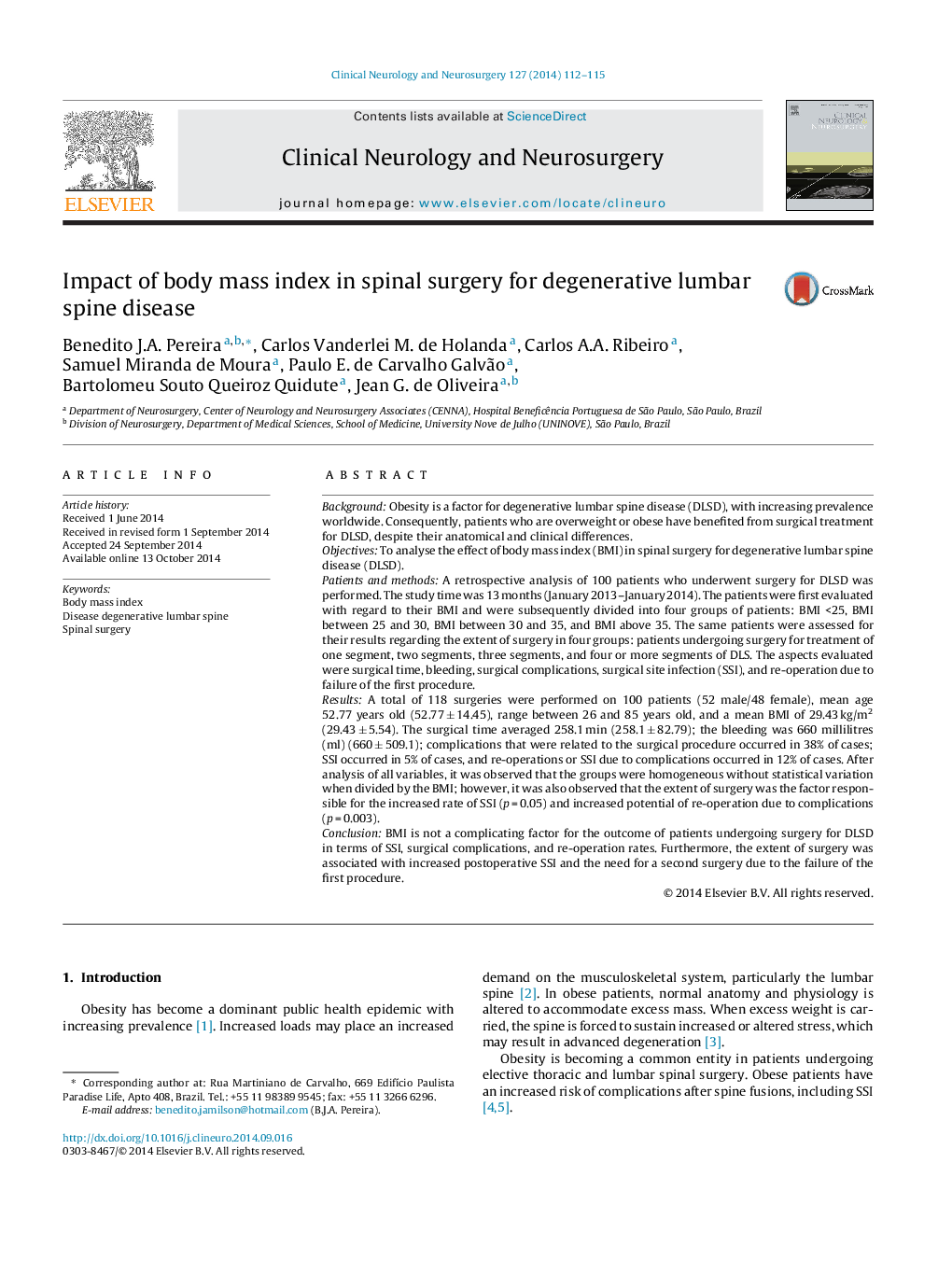| کد مقاله | کد نشریه | سال انتشار | مقاله انگلیسی | نسخه تمام متن |
|---|---|---|---|---|
| 3040066 | 1579695 | 2014 | 4 صفحه PDF | دانلود رایگان |
• Obesity is a factor for degenerative lumbar spine disease (DLSD).
• Body mass index is not a factor for outcome of patients undergoing surgery for DLSD.
• Extent of surgery proved to be associated with unfavourable outcomes in DLSD.
BackgroundObesity is a factor for degenerative lumbar spine disease (DLSD), with increasing prevalence worldwide. Consequently, patients who are overweight or obese have benefited from surgical treatment for DLSD, despite their anatomical and clinical differences.ObjectivesTo analyse the effect of body mass index (BMI) in spinal surgery for degenerative lumbar spine disease (DLSD).Patients and methodsA retrospective analysis of 100 patients who underwent surgery for DLSD was performed. The study time was 13 months (January 2013–January 2014). The patients were first evaluated with regard to their BMI and were subsequently divided into four groups of patients: BMI <25, BMI between 25 and 30, BMI between 30 and 35, and BMI above 35. The same patients were assessed for their results regarding the extent of surgery in four groups: patients undergoing surgery for treatment of one segment, two segments, three segments, and four or more segments of DLS. The aspects evaluated were surgical time, bleeding, surgical complications, surgical site infection (SSI), and re-operation due to failure of the first procedure.ResultsA total of 118 surgeries were performed on 100 patients (52 male/48 female), mean age 52.77 years old (52.77 ± 14.45), range between 26 and 85 years old, and a mean BMI of 29.43 kg/m2 (29.43 ± 5.54). The surgical time averaged 258.1 min (258.1 ± 82.79); the bleeding was 660 millilitres (ml) (660 ± 509.1); complications that were related to the surgical procedure occurred in 38% of cases; SSI occurred in 5% of cases, and re-operations or SSI due to complications occurred in 12% of cases. After analysis of all variables, it was observed that the groups were homogeneous without statistical variation when divided by the BMI; however, it was also observed that the extent of surgery was the factor responsible for the increased rate of SSI (p = 0.05) and increased potential of re-operation due to complications (p = 0.003).ConclusionBMI is not a complicating factor for the outcome of patients undergoing surgery for DLSD in terms of SSI, surgical complications, and re-operation rates. Furthermore, the extent of surgery was associated with increased postoperative SSI and the need for a second surgery due to the failure of the first procedure.
Journal: Clinical Neurology and Neurosurgery - Volume 127, December 2014, Pages 112–115
